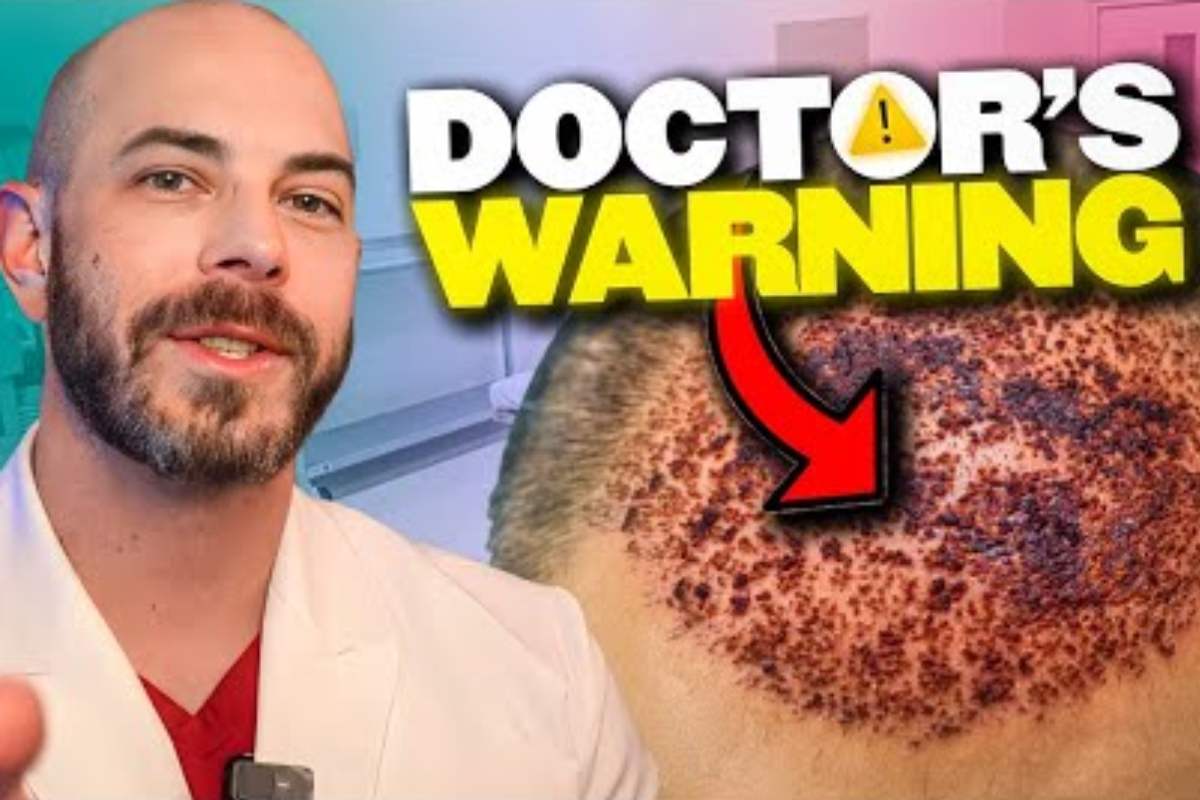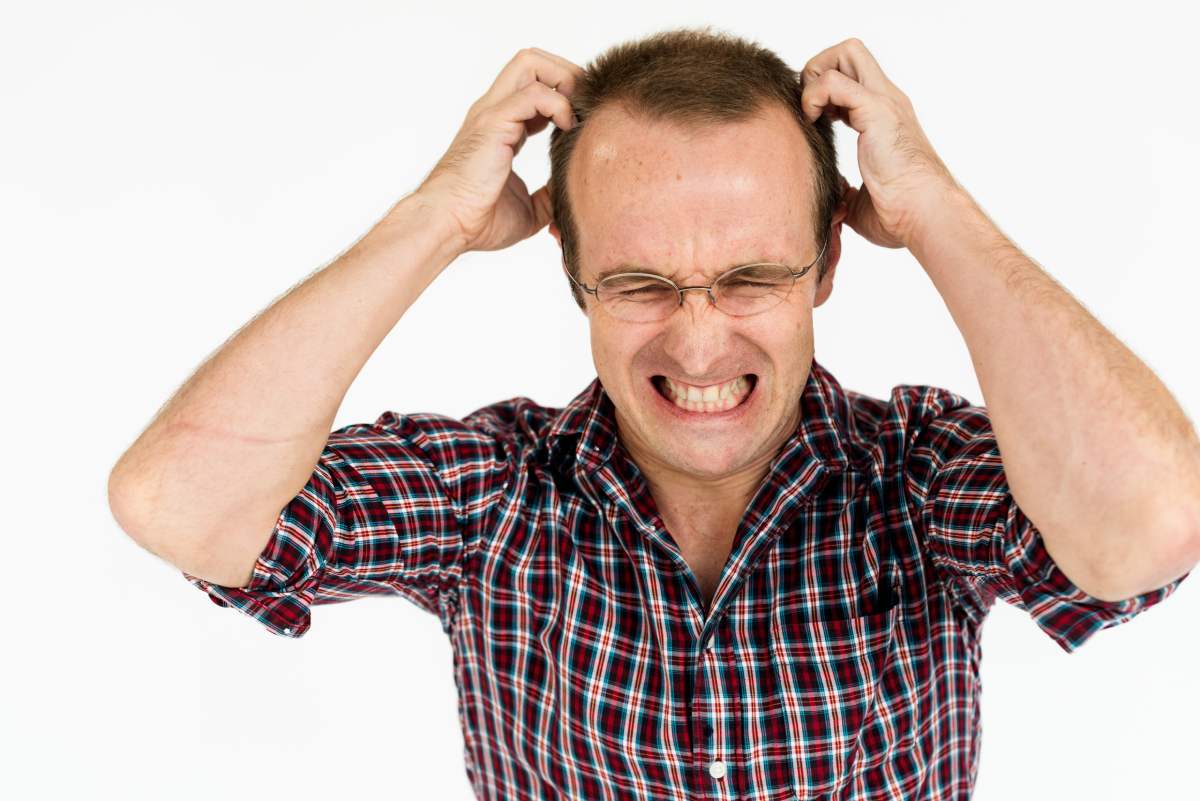Finding clumps of hair in your hands or on your brush may cause you to panic and immediately start researching how to make it grow back, or possibly even look into a hair transplant. It’s fairly common for people to start losing their hair in their 20’s but there is no reason to immediately freak out.
It’s only natural that many people in their 20’s and 30’s seek out the services of a hair transplant doctor. It’s a scary feeling to see your hair begin to fall out when you’re just settling into the prime of your life. But should you immediately rush out and get a hair transplant when you’re so young? There are many different things to consider when it comes to the best age to get a hair transplant.
Should I Get a Hair Transplant When I’m Young?
Even though technology in medicine is improving daily, it can’t be used to stop time or reverse the effects of aging and genetics. Time is the biggest enemy when it comes to hair loss, and that’s why there are hair transplant specialists that have dedicated their lives to treat hair loss.
But don’t run out to the doctor at the first sight of hair in the sink at your college dorm. If you’re very young, there are very good reasons to wait before moving forward with any sort of hair transplant surgery.
What is the Best Age to Start Looking into Hair Transplant Surgery?
While the ideal age for a hair transplant is going to be different on a patient-by-patient basis, most hair loss specialists will agree that the best age range to start considering it would be in your 30’s.
By the time you’re in your 30’s, your pattern of baldness (or thinning) has emerged and doctors can better recommend the right treatment or transplant based on the pattern or severity.
If you undergo a hair transplant too early, you will inevitably lose more hair and you may require multiple procedures in the future to fill in gaps that may appeared after the initial procedure. Another issue you may run into if you undergo transplant surgery too early is that the donor area (the area where the specialist is “borrowing” or excising hair follicles from) could start to thin out as well. If you start removing hair from this area in order to transplant elsewhere on the scalp, the donor area can become very thin over time and even look patchy later. This is not a good tradeoff for having hair in the front of your head.
It’s similar to getting braces. You wouldn’t straighten your baby teeth just to watch them all fall out and have to repeat the entire process again with your adult teeth.
A good hair transplant specialist will be able to recognize the pattern of loss along with your lifetime prognosis for further loss. Then, they will be able to advise you if they believe you’re too young for the procedure. If you’re young and find a doctor willing to perform the procedure without trying medicinal therapies, or other hair loss options, then we would suggest getting a second opinion, just in case.
There are always people that lose their hair earlier than others, but recognizing the patterns and doing all you can to maintain your native hair and avoiding a procedure you may regret later is the goal of any good hair loss specialist. Dr. Krejci will tell her patients, “If a hair surgeon agrees to do surgery on a 21-year-old guy without initiating medical treatment, run as fast as you can out of that office.”
Disadvantages of an early hair transplant
Skilled Hair transplant surgeons are very good at meticulously excising the best donor hairs and designing your graft sites. However, there is one thing they cannot control and that is time. Hair loss usually starts around age 20, but will continue until about age 60. It’s impossible for surgeons to know the exact balding pattern you’re going to have in the future, but they do know with 100% certainty that your hair will not get better with age.
If you get a hair transplant in your 20’s, the surgeon will place healthy follicles in the balding areas, but the hair behind it will eventually recede. While the transplanted hair will flourish, the end result will be a noticeable patch of strong hair (the transplanted area) with thinning/balding spots all around it. This creates a very unnatural appearance.
Another concern is that some people in life are just destined to be completely bald. In this case, there is only so much that can be done. You can never borrow enough hair from the back of your head (or body) to replace all that is lost on top of your head, even if you have a good donor supply. There will always be a supply and demand mismatch between donor hair and balding scalp, unless scientists every get hair cloning to work.
In addition, realistic expectations are a concern for doctors counseling young patients. By getting the procedure done in your 20’s, one’s expectations are higher and possibly unreasonable because your genetics will always prevail. If you are destined to have extensive baldness, even the best medications and surgeries cannot undo that. That is not to say that mature men with Norwood pattern 6 or 7 haven’t been very satisfied with their hair transplant. A natural appearing restored frontal hairline frames the face and provides more grooming options and can be vital to one’s appearance and self-image. But this is obviously not the same as the hair you had at age 18. Expectations at age 40 or 50 are different than at age 20 because you have peers around you with various stages of hair loss and it becomes more “normal” and accepted. The best surgeons will help you understand both the possibilities and limitations of hair transplant.
Is it ok to Get a Hair Transplant in Your Later Years?
Now that you understand the reasons for avoiding a hair transplant procedure when you’re young, what about when you’re older?
If doctors recommend getting a hair transplant in your 30’s, is it ok to have the surgery in your 40’s or later?
Of course.
Unless you have underlying health conditions or other issues that may put you at higher risk from having any surgical procedure, then a hair transplant is a very safe and effective procedure, but there are some other risks to consider as you get older.
Patients over age 50 or 60 tend to already have some age-related thinning which can lead to less donor hair available for transplanting. It can also mean that the areas that the donor hair is being excised from may appear even thinner after removing hair follicles for transplant. A good surgeon will know how to adjust for this change that comes with age.
The goal with hair transplants in older people is to ensure that patient expectations are managed based on each individual patient.
Someone with extensive hair loss on top, but some thinning around the sides of the head, will need to understand how much hair they excise and where it will be most useful for transplantation. Hair transplant to the crown is often discouraged if there is also loss of the hairline. The crown of the head requires a LOT of grafts to make it even start to appear filled in and most men don’t have enough donor at any age to accomplish this.
Many men over 50 are also not interested in buzzing their hair or wearing the short fades that are popular with today’s youth. This makes the FUT procedure a very valid option as it allows for more grafts harvested even if their donor area is shrinking. A well-healed linear incision is easily hidden in a scissor cut style even during the initial healing phase.
As long as you visit a qualified specialist who explains the risks and benefits of the procedures to you, then there is no reason why a hair transplant isn’t physically possible at any age (except, of course, if you have other medical issues that would prevent you from having surgery).
Believe it or not, Dr. Krejci once had a 90-year-old patient asking for hair transplant. After discussing risks, benefits and reviewing his medical history, he explained in his own words, “if I’m alive next year, I want more hair!” We’re glad to say he is still alive and enjoying his thicker hairline. 😊
Other Solutions for Hair Loss if a Transplant isn’t an Option
If getting a hair transplant in your 20’s is not a good idea, and your hair loss pattern may be too severe later in life, what can I do to help my thinning hair line?
Fortunately, there are several things hair restoration experts recommend that you do when you start noticing your hair thinning out.
The first and most obvious is to make an appointment with a hair restoration specialist. During your consultation, they will ask you questions about your family history, medical history, and hair grooming practices in order to better understand your individual hair loss needs.
They will then make recommendations based on this information and your current level of hair loss. The doctor may recommend one of the many hair growth therapies available, as well as various medicinal shampoos or foams that you can be used.
Medicinal Hair Loss Therapy (Non-Surgical)
Here are just a few of the medical therapies available for both men and women to help stop or slow down hair loss if a hair transplant isn’t an option:
PRP
Platelet Rich Plasma (PRP) therapy is when platelets are extracted from your body and injected into the problem area in order to stimulate hair growth. This is a non-surgical therapeutic option for those who cannot or do not want to undergo a surgical hair transplant.
Low-Level Laser Light Therapy
Low-level laser diodes are used to stimulate hair growth for people who suffer from pattern balding. This procedure uses light waves generated from a special helmet, cap or band that you wear on your head for a short time, 2-3 days per week. These light waves have been shown to help stimulate hair growth.
Minoxidil /Finasteride
These are the FDA approved therapies available for men. Treatment results are visible as early as 3-6 months, but full results can take up to 2 years and is intended to slow further loss and regrow miniaturized hair. These therapies have a wide range of advantages and during your consultation; the surgeon will let you know which one is best for your particular situation.
Biotin / Viviscal / Nutrafol / Votesse
These vitamins and supplements may help the strength of your hair and provide fuller growth.
Hair Restoration Experts in San Antonio
No matter what age you are, if you are experiencing hair loss, schedule a consultation with the experts at Limmer Hair Transplant Center. Our surgeons are the foremost experts on hair loss and what can be done to help those people who may be too young for a transplant but wish to stop or slow the hair loss they’re currently experiencing.







